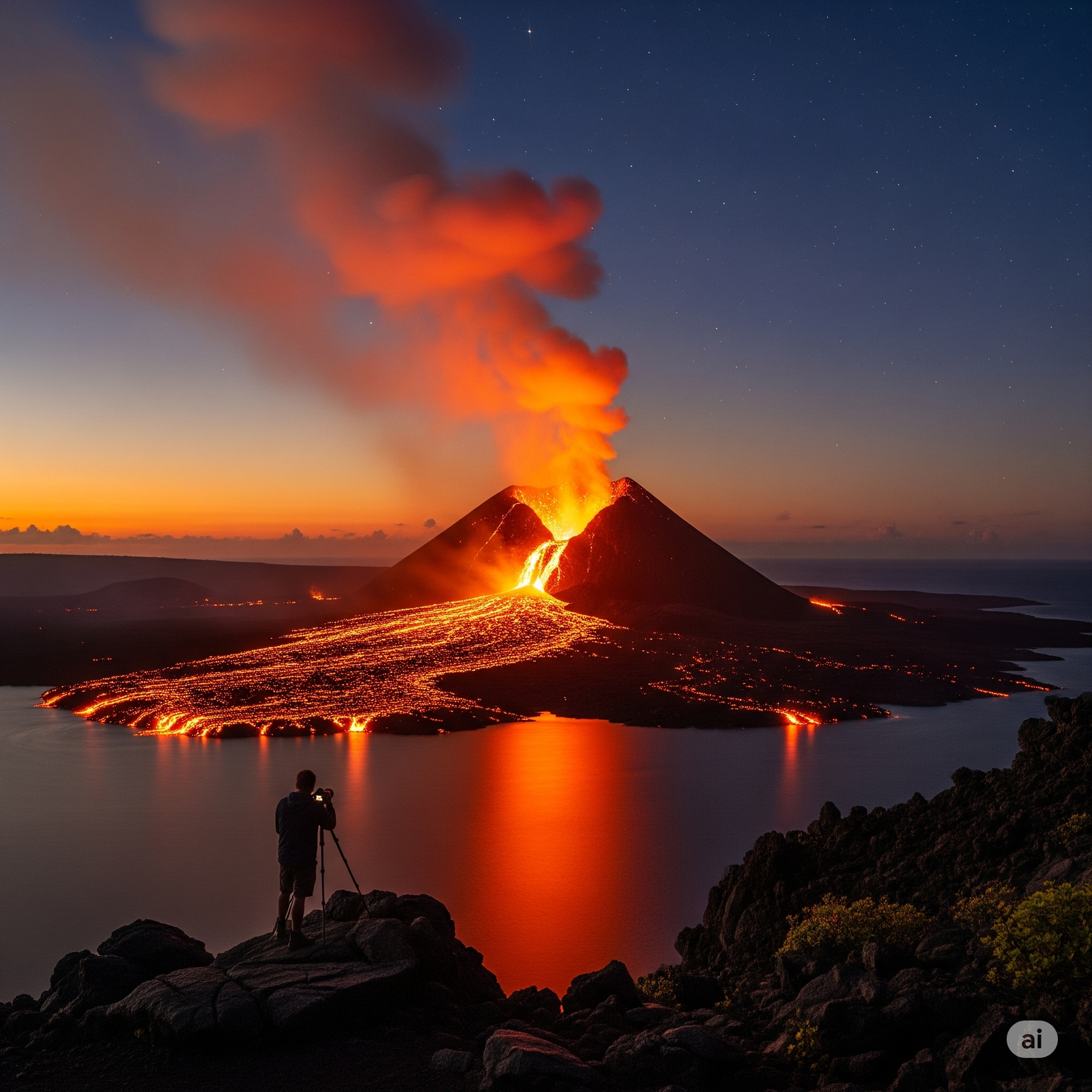For photographers seeking truly dramatic, otherworldly landscapes, Vanuatu is a hidden gem. This South Pacific archipelago is a geological marvel, boasting several of the world’s most active and accessible volcanoes. From glowing lava lakes to vast ash plains, Vanuatu offers an unparalleled playground for capturing the raw power and ethereal beauty of our planet.
If you’re a shutterbug with a passion for fiery spectacles and unique terrain, pack your gear and prepare for a visual feast!
The Star of the Show: Mount Yasur, Tanna
Without a doubt, Mount Yasur on Tanna Island is the crown jewel of Vanuatu’s volcanic photography scene. Known as the “world’s most accessible active volcano,” Yasur’s continuous Strombolian eruptions provide a constant, breathtaking spectacle, especially at dusk and into the night.
Photography Tips for Mount Yasur:
- Timing is Everything: While fascinating during the day, Yasur truly comes alive in the “blue hour” (just after sunset) and well into the night. The less ambient light, the more vivid the orange and red glow of the lava and the incandescent bombs arcing through the sky. Aim for the evening tour to maximize your low-light opportunities.
- Long Exposures are Your Friend: To capture the mesmerizing trails of molten lava and the arcs of lava bombs, a tripod is essential. Experiment with shutter speeds from 1/2 second to several seconds. This will allow enough light to register the lava’s movement while keeping the surrounding landscape (if any ambient light is present) well-exposed.
- Manual Mode is Key: Forget auto mode. You’ll need full control over ISO, aperture, and shutter speed to manage the extreme contrast between the bright lava and the dark sky. Start with a relatively low ISO (e.g., 400-800) to minimize noise, then adjust aperture (around f/4 to f/8 for good depth of field) and shutter speed to get the right exposure.
- Composition and Framing: Look beyond just the eruptions. Frame the volcano against the twilight sky, incorporate the ash plume lit from below by the magma, or find interesting foreground elements like barren ash dunes or local guides to add scale. Don’t be afraid to move around (within designated safe areas) to find different perspectives.
- Protect Your Gear: Volcanic ash is fine, abrasive, and corrosive. Use a rain cover or protective bag for your camera body and lenses. Avoid changing lenses on the rim if possible. Bring plenty of lens cloths and a blower bulb to clean dust. A UV filter can offer an extra layer of protection for your front lens element.
- Safety First: Always heed the advice of local guides and stay within designated safe zones. Volcanic activity can be unpredictable.
Beyond Yasur: Other Volcanic Wonders
Vanuatu’s volcanic allure extends beyond Tanna, offering diverse photographic opportunities:
- Ambrym Island: Known as the “Black Island,” Ambrym boasts a vast, moon-like caldera with two active lava lakes, Benbow and Marum. Reaching these involves arduous multi-day treks across ash plains and through dense jungle, but the reward is a truly unique, alien landscape.
- Photography Challenge: Capturing lava lakes often requires venturing into deep craters, demanding extreme caution and specialized gear. The sheer scale of the caldera also offers incredible wide-angle landscape opportunities, particularly with the black ash contrasting against the sky.
- Ambae Island (Manaro Voui): While access can be restricted due to its often-volatile activity, Ambae’s caldera often features stunning crater lakes that change color based on volcanic activity. When safe, aerial photography can capture the ethereal beauty of these unique geological formations.
- Lopevi: An uninhabited, conical island volcano that occasionally erupts, creating dramatic plumes visible from nearby islands. Photographing Lopevi often involves boat trips, allowing for captivating shots from the sea.
Essential Gear for Volcanic Photography:
- DSLR or Mirrorless Camera: With manual control capabilities.
- Sturdy Tripod: Non-negotiable for long exposures.
- Wide-Angle Lens: For sweeping landscapes and capturing the full scale of eruptions.
- Telephoto Lens: To get closer to the action safely and compress the scene.
- Remote Shutter Release: To avoid camera shake during long exposures.
- Extra Batteries: Cold and long exposures drain batteries quickly.
- Headlamp/Torch: Essential for navigating in the dark.
- Lens Wipes & Blower Bulb: For managing ash.
- Dust & Rain Covers: For camera and bag protection.
- N95 Mask & Goggles: For personal protection from ash and gases.
- Strong, Closed-Toe Footwear: For rugged, ash-covered terrain.
Vanuatu is more than just a tropical paradise; it’s a living geological canvas. For photographers, its volcanic landscapes offer unparalleled opportunities to capture moments of raw Earth energy, from the explosive bursts of Mount Yasur to the brooding beauty of ancient calderas. Prepare your gear, embrace the dust and the rumble, and get ready to fill your memory cards with truly unforgettable images.


Leave a Reply